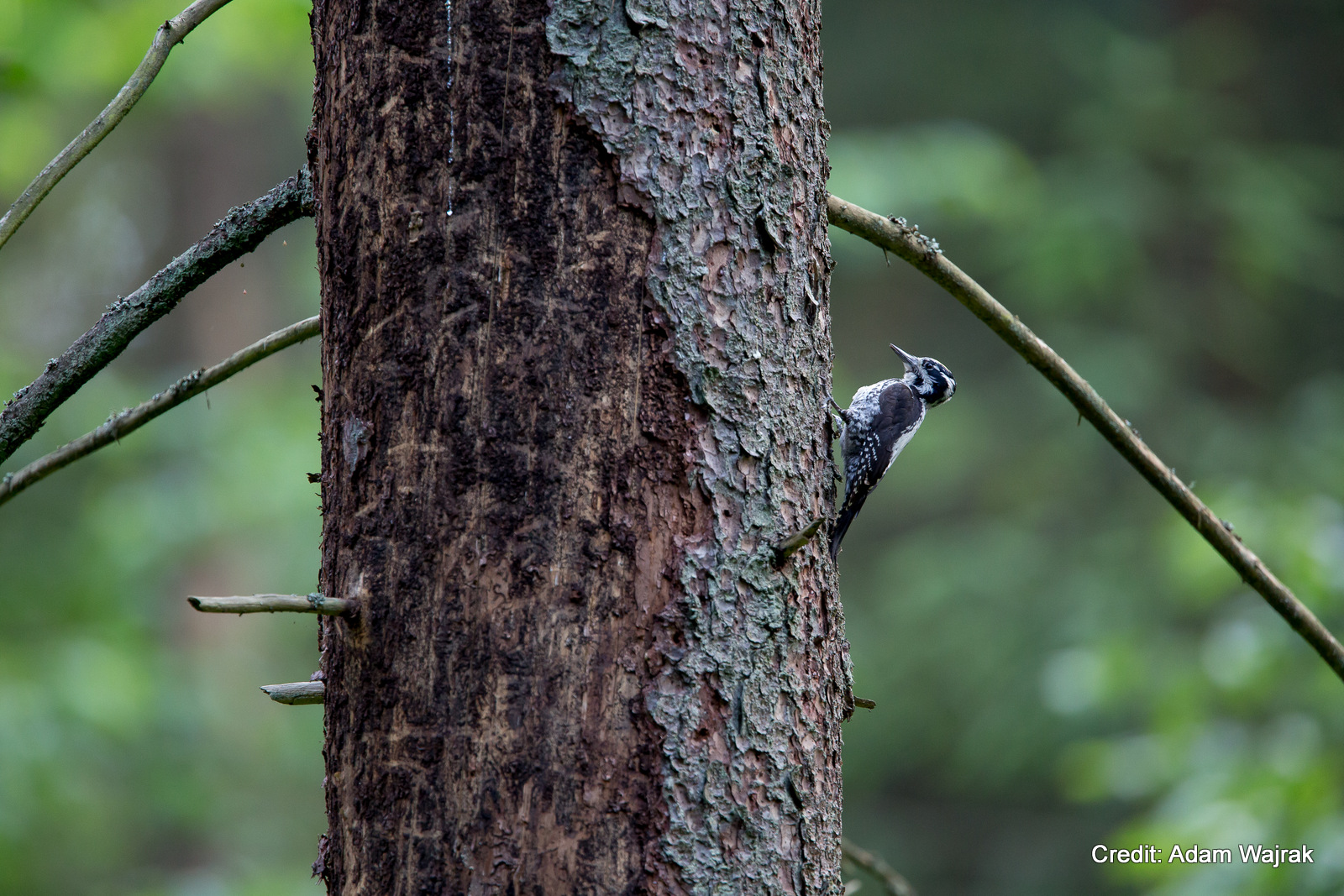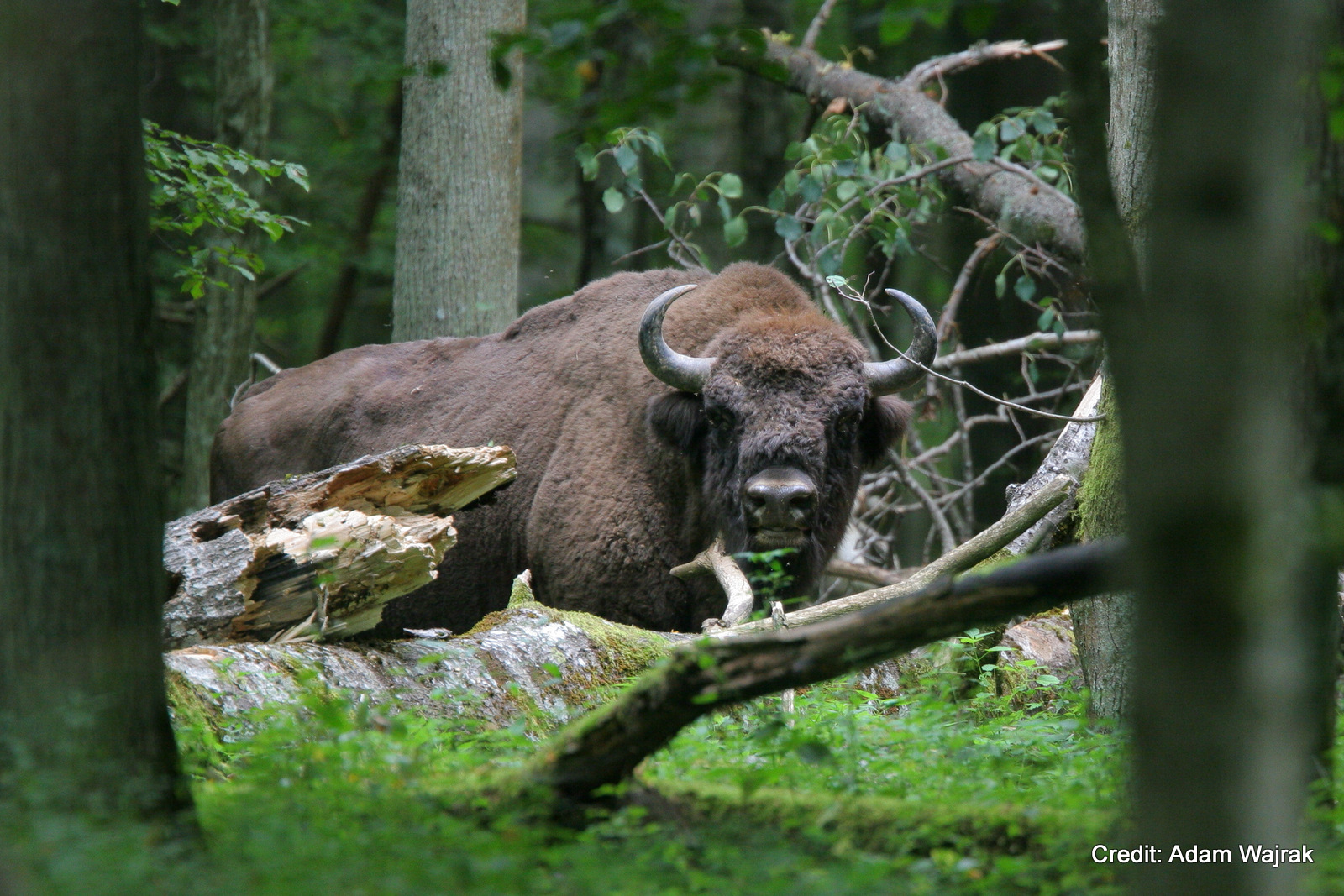The Policy Committee of the SCB European Section (SCB-ES) wrote a letter to the Polish Prime Minister, Polish President, European Commissioner, UNESCO and Council of Europe expressing concern about the Polish Government's plans to modify the existing 2012-2021 Forest Management Plan for Białowieża Forest. In the letter, Dr. Nuria Selva and SCB-ES colleagues highlight that the forestry practices proposed in an amended Annex set out by the Polish Government, such as salvage logging as a response to bark beetle outbreaks, break the limits of timber extraction established in the Forest Management Plan 2012-2021, and are not only unnecessary for the protection of the Białowieża Forest, but are counterproductive. Efforts by Selva and Polish scientists were highlighted in an article in Nature.
Białowieża Forest is threatened by proposed changes to the Polish Government’s Forest Management Plan, which would allow for increased timber harvest. The Society for Conservation Biology’s European Section (SCB-ES) has reacted to this proposed change by sending a letter to the Polish Ministry of Environment. SCB-ES has followed the case of Białowieża Forest for a decade now and continues supporting the protection of old-growth forest stands in the forest and elsewhere in Europe. These European activities form part of the Society for Conservation Biology's Global Forest Initiative.
On 18th February 2016, SCB-ES sent the following letter by post to the Polish Ministry of Environment with copies to the Polish Prime Minister, Polish President, European Commissioner, UNESCO and Council of Europe. In addition, on 24th February 2016, the SCB-ES President, Dr Piero Visconti also emailed the letter to the Polish Ministry of Environment.
SCB-ES talked with member, Nuria Selva of the Institute of Nature Conservation, Polish Academy of Sciences in Kraków, Poland, to find out more about the potential changes in environmental policy in Poland, and how this could affect both the management and protection of Białowieża Forest. Learn more about the Białowieza Forest below.
Białowieza Forest – values and protection
Białowieza Forest (~1600 km2, near the Polish-Belarusian borderland) is the last remaining large fragment of primeval deciduous forest in Europe. Different forest types and high structural diversity result in an exceptional biodiversity. More than 17,000 plant and animal species have been recorded in Białowieza Forest. The forest supports the largest population of European bison as well as large populations of large carnivores such as the wolf and lynx. Bird communities are characterized by rare species of woodpeckers, owls and hole-nesting songbirds that depend on old growth and standing dead trees. The forest is a unique biodiversity hotspot in Europe, and a fascinating source of scientific knowledge, particularly for understanding ecological processes. Białowieza represents a much needed ecological blue-print for the restoration of forests in Europe as well as elsewhere in the world.
|
Białowieża Forest |
The protection of Białowieza Forest dates back to the 14th century. Białowieza National Park (50 km2) was established in 1921, and was included in the list of World Biosphere Reserves in 1977, as well as listed as an UNESCO World Heritage site in 1979. In 1996, the area of the National Park was doubled to its current size of 105 km2. In 2003, ~122 km2 were declared as Nature Reserves within Białowieza. The rest of Białowieza Forest, not within protected areas, is open to commercial timber extraction and hunting. Many old-growth forest stands are still unprotected within Białowieza, and the silvicultural practices used in non-protected areas, do not maintain ecological processes. In 2014, the UNESCO World Heritage was extended to include the entire Polish side of Białowieza Forest.
For more than 20 years, scientists and conservation experts have recommended the protection of all remaining non-protected areas of Białowieza Forest, suggesting to protect remaining areas as National Park (currently ~17% of Białowieza Forest is protected as National Park). Despite several attempts made by the Polish Ministry of the Environment, this has not been possible due to limitations in the existing legal framework and a lack of support from municipal councils. Following this, 250,000 Polish citizens challenged the existing legislation and the right to veto the creation of national parks. The Polish government did not put this particular amendment to vote and after five years the citizen initiative eventually expired.
|
Three-toed Woodpecker |
Forest Management Plan 2012-2021- annexing
To meet recommendations made by the Council of Europe to revise existing forestry policy and practices, a number of regulations were introduced while preparing the new Forest Management Plan for the managed forests in Białowieza Forest and a management plan for Natura 2000 sites. In 2012, the Polish Minister of the Environment approved the Forest Management Plan for three Forest Districts of Białowieza Forest. The approved management plans limited timber extraction, on average, to 48,500 m3/year for the next 10 years (compared to 150,000 m3/year in previous decades) and ensured the protection of 100-year old forest stands. This was broadly recognized as a sensible step forward in meeting all stakeholder’s expectations, because it supported local needs for logging timber while safeguarding ecological processes in Białowieza Forest.
The proposed actions have not been adopted by local managers, and a recent increase in timber harvesting, formally justified by the need to curb bark beetle outbreak, greatly exceeds the limits set forth in the Forest Management Plan. Further, current timber harvesting levels constitute a serious threat to the maintenance of a 10-year limit in timber harvesting set by the Forest Management Plan. Environmental non-government organizations (NGOs) have expressed concerns that one of the Forest Districts have already reached the harvesting limit set out in the Forest Management Plan, and have suggested that the district should abandon timber harvesting for the next 6 years.
The significant increase in the average annual limits of timber harvesting within Białowieza Forest Districts have resulted in a proposal to update (through annexation) the Forest Management Plan 2012-2021 for the Forest District that has already met its harvesting limit. The proposed annex considers the significant increase in logging, removal of dead wood and does not guarantee the protection of forest stands older than 100 years. In supporting the proposed annex of the Forest Management Plan, forestry authorities argue that ‘active management’ by harvesting is needed to protect the forest from bark beetle outbreaks and fire risk.
|
European Bison |
Scientists’ and environmental NGO’s perspectives
The bark beetle outbreaks occurring in Białowieza Forest are driven by multiple factors, including spring weather conditions, drought, the spatial configuration of spruce stands (including strictly protected stands where salvage logging is forbidden), and the occurrence of fires in Białowieza Forest. There is a coevolution of spruce trees and bark beetles that results in a cycle. This spruce-bark beetle cycle begins with a rise and peak in bark beetle numbers; the rise in bark beetle numbers is followed by the death of adult spruces in some patches. The cycle ends with a high regeneration of young spruces. Bark beetles are forest engineers, shaping the long-term dynamics and structure of the forest. Many species, like the three toed-woodpecker, depend on the bark beetles as a food source.
From an ecosystem perspective, the Białowieza Forest ecosystem needs to be viewed as more than just adult trees; young trees are also important and a part of the ever changing ecological processes within the forest. Treating the bark beetle as a pest is not justified in the context of the protection of biological diversity and ecological processes within the broader context of managing all components of Białowieza Forest. In addition, controlling the current bark beetle outbreak is not possible without infringement of the European Union Habitats Directive.
On 18 November 2015, State Council for Nature Conservation in Poland passed an official statement against the planned increase in forestry activities. This statement was followed by similar statements from the Committee for Nature Conservation of the Polish Academy of Sciences and the Scientific Council of Białowieza National Park. The proposed annexation of the Forest Management Plan will be an infringement of Polish and EU environmental law and the UNESCO criteria.


